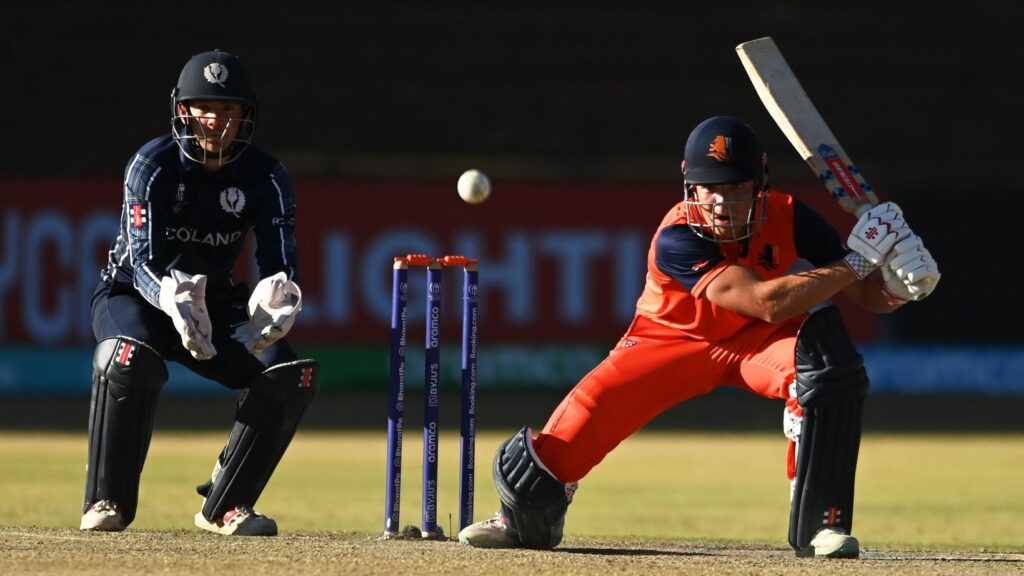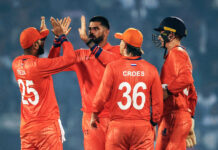

Adhitya Sutresna
Cricket in context
The World Test Championship and ODI Super League are too often criticised by pundits (who invariably exclusively cover Full Members) as being too complicated, or that the average punter doesn’t really care about them. When they’re being generous, they concede the fact that these two mechanisms were brought in to address the decades-long need of providing context to international bilaterals. So how come they’re still making these complaints, to the point that the Super League has been scrapped altogether?
My theory: too many people, when they say that cricket needs context, actually mean “cricket needs to be the way it was when I was a kid”. How many people in Australia and England do we know like cricket but only care about the (men’s) Ashes? Or the ones lamenting the decline of the West Indies just because they were the dominant team when a lot of today’s pundits were growing up, without being aware of the privileges afforded to the West Indies that aren’t available to 90% of ICC members? People are of course allowed to like what they like, but when it comes at the cost of the global game at large, the game’s priorities need a major re-think.
🚨 New #ECPod 🚨@timcutler & @HeliocentCric celebrate cricket’s #LA28 inclusion, @KNCBcricket‘s #CWC23 🇿🇦victory & all the other action, including @Cricketarg‘s record-breaking win over Chile.
🎧 https://t.co/LFWlJNTPIn
🍎 https://t.co/JxBcJbCu72
🟢 https://t.co/r6itUcpmYe pic.twitter.com/Tm53XmzNhr— Emerging Cricket (@EmergingCricket) October 20, 2023
People might hide behind wanting context for cricket, but we also need to put cricket into context. It is already a global sport, but it can be a better global sport – one that gives the chance to anyone who might want to play it to play, and one that actively promotes itself to anyone not already aware of it. This is why we need robust systems to maintain and grow global interest in the game that includes people from nations big and small, cricketing traditions old and new, and across as many diverse demographics as we possibly can. Solving the issue of structuring international cricket is not the only thing that needs to be done, but it is an incredibly important part of it.
Cricket needs more organisation, not less
In fairness, when Full Member nations’ men’s players say there’s too much bilateral cricket, it’s because they play a lot of it. Between the end of the 2019 World Cup and the start of 2023’s, India’s men played 66 ODIs, West Indies 60, Sri Lanka 56, Bangladesh 53, England 46, and Australia 46. The vast majority of these matches were bilaterals, many were outside the Super League. Considering that these teams also play Tests, T20Is, and their players play plenty of franchise matches, it’s hard to say that it’s not a lot of cricket.
Part of the reason why this is less of a problem in the women’s game, at least with ODIs, is because the ICC Women’s Championship (upon which the ODI Super League must have been based) allows women’s matches to be better planned ahead of time while simultaneously providing stakes to every match. As franchise leagues grow in stature in women’s cricket, the Women’s Championship becomes increasingly important in ensuring players can fulfil both international and franchise commitments (and is also why there is an urgent need for a similar T20Is structure, as well as both white ball formats in the men’s game).
The other benefit to these kinds of structures, which has yet to be fully tapped into by the Women’s Championship, ODI Super League, or the World Test Championship, is that they can provide a pathway for emerging teams to play against higher-ranked opposition through promotion. Like others have noted, this was how the Netherlands (having been promoted to the Super League) built their astonishing squad depth on their way to World Cup qualification. A more sophisticated promotion-relegation system can give more opportunities to a greater number of higher-ranked emerging teams to play against strong opposition in a meaningful context.
If we agree that cricket is a good thing, then why not make it so that as many people can be involved as possible?
People not understanding the World Test Championship or Super League is a problem, but has anyone ever understood the Future Tours Program? At present, that is the only thing dictating which full member teams play where in T20I, and now ODIs as well without the Super League, and left to its own devices is the very thing that leads to many full member players thinking that there are too many international bilaterals. The average punter might not understand the WTC, but the teams competing in it sure do – they go into every series knowing exactly what they need to do to get closer to winning it. We might as well use something that at least gives the players competing a good reason to play as much as they do.
What are we actually trying to achieve?
My earlier point about cricket being a better global sport should be the mission of any sport – if we agree that cricket is a good thing, then why not make it so that as many people can be involved as possible? And finances will inevitably always be a concern, but it’s long past time that the ICC functions as the governing body they are, where money is only as important as its ability to ensure as many of their constituents thrive as much as possible. (sadly, one can argue that the ICC is already like many governments, since decisions around money in cricket are instead used to enrich those in charge). It’s not sustainable that survival of countries like Ireland’s cricketing future hinges on whether or not they qualify for major tournaments; there needs to be frameworks that protect cricketing nations from financial winds that would otherwise threaten their existence.
This should be the guiding principle in the ICC’s decision-making. Matches between Full Members and franchise leagues may well be the money-spinners, but that money needs to be reinvested into structures that can benefit the cricket world at large. There will no doubt be times where tough conversations need to be had about what formats can be supported and what shapes they can take given financial realities, but the highest priorities should always be a) ensuring those who want to play the game can continue to play, and b) finding those who aren’t aware of the game and encouraging them to play.
Rod Lyall
Given that I was a kid in the 1950s, Adit, my nostalgia has a lot further to travel than most people’s! ODIs weren’t even a gleam in anybody’s eye then, let alone T20, and there were only six ICC members.
Cricket is in many ways a much better game to watch now than it was then: even Test cricket has been transformed by developments in the shorter formats, and gone are the days when fielders watched the ball go past them before plodding to the rope to retrieve it. But you’re right that most of the debate has a generational element, and that the younger you are the more likely it is that you’ll think the IPL, with all its hype, is the quintessence of the game and that everything else is a pale imitation.
As Lord Woolf wrote, the sport’s leaders have an obligation to govern in the interests of all the ICC’s members
And of course you’re right that money (rather than love of the game) conquers all. There’s a geopolitical element as well: having paid heavily for their cynical and essentially racist domination of the sport until the 1980s, England and Australia have concluded that the best way to cling to as much as possible of their power is to cling to the BCCI’s coat-tails, milking the game for whatever’s left after the Indian bosses have taken their grotesquely inflated share of the revenue.
As you imply, what’s needed in the governance of cricket is a moral transformation, an understanding that, as Lord Woolf wrote, the sport’s leaders have an obligation to govern in the interests of all the ICC’s members, looking beyond the interests of their own organisation. I hope you live to see that happen; I doubt very much whether I will. But that won’t stop me from demanding it!
Nick Skinner
Rod, I’m glad you mention the Woolf Review. Like most of cricket’s problems, the dysfunction around ODI cricket can be traced directly back to the ICC’s governance structure – namely, the fact that “the ICC” as an entity has very limited decision-making powers and any substantial reforms need to get past the self-interest of powerful Full Member boards. It’s why the Super League (an imperfect step in the right direction) was scrapped before even being given a chance to conclude, and it’s why the Super League was such a messy half-measure in the first place.
It’s also why more technical ideas for structural reform of ODI (and indeed Test) cricket have gone nowhere. The idea of revenue-sharing or pooled broadcast rights has been raised even by weaker Full Members like the West Indies, and in my view it’s a key component of ensuring the format’s future success. Other sporting leagues have successfully leveraged their coherent structure to provide a marketable product to viewers, and there’s no reason this principle couldn’t be applied to cricket. Imagine if the ICC were able to sell centralised streaming for the ODI Super League, with graphics, stats, scorecards, highlights built into the interface. Viewers could pay for all-league packages or a single team pass, or just the closing stages, etc. Mike Jakeman wrote a compelling case for how this could work, referencing the success of baseball’s digital offerings, and his arguments have only become more relevant in the decade that has passed. Unfortunately, this idea (like most which would help to balance the game’s inequalities) would most likely be quashed by the financial self-interest of the Big 3, who seem very unlikely to give up any of their domestic broadcasting revenue. It would also require the ICC’s in-house streaming platform, ICC.tv, to be massively improved, as the regularly unwatchable coverage of qualification tournaments and CWC League 2 matches can attest to.
🚨 New #ECPod 🚨@HeliocentCric catches up with @PeterDellaPenna to discuss the Americas Qualifiers in Bermuda, as well as a recap of events around the world
⏬ https://t.co/g6WrkrGSwS
🟢 https://t.co/wLHry1PPff
🍎 https://t.co/k6j5OKflNG— Emerging Cricket (@EmergingCricket) October 15, 2023
The boardroom power is not the only way in which the major Full Members wield influence though; as referenced above, the driving media narrative around the so-called crisis in ODIs is dominated by journalists from a small set of ICC members who rarely watch matches that don’t involve their “home” team and even more rarely matches between Associates. This myopic view of the game around the world is evident in broadcasters barely mentioning (or even actively denigrating) the existence of the Super League while it was in progress, but also in the lack of historical context.
Critics of ODIs complaining that they’ve become predictable are missing the fact that cricket is an inherently predictable sport, and always has been. I’ve written extensively about the fact that upsets (i.e. lower-ranked teams beating higher-ranked teams) are generally uncommon, and even within any given match, it’s usually evident who is going to win pretty quickly. In all completed men’s ODIs for example, 52% have been won by at least 50 runs or with 5 or more overs remaining. This does drop slightly to 49.7% if we count only matches between current Full Members, though since 2000 it’s blown out to 54.1% between those teams. So in any given ODI match, there’s a better than even chance that the result will be an easy win. The T20 format is not a solution to this either – if we take 25 runs or 2 overs in hand as comfortable margins, 47.7% of men’s matches between current Full Members have been easy (56.5% overall), while in the women’s game the trend is even more pronounced with 53.1% between current Full Members and a whopping 65.9% overall.
That’s not to say the onfield product can’t be improved – as Shounak alludes to, the way a match plays out will naturally be influenced by the playing conditions, and ODIs have proven to be a remarkably adaptable format over the years. Administrators should certainly be exploring tweaks around new balls, flat pitches, fielding restrictions, etc. However, it certainly seems odd to me that the sudden wave of consternation hitting the ODI format points the finger at issues that have existed unnoticed for decades. And it also seems very convenient that the proposed solutions tend to line up with the financial interest of the major boards.
No, I believe the problem with ODIs is not that it’s an inherently bad form of the game, it’s that it lacks the accessible structure and administrative support needed to build an audience.
Continued on the next page






